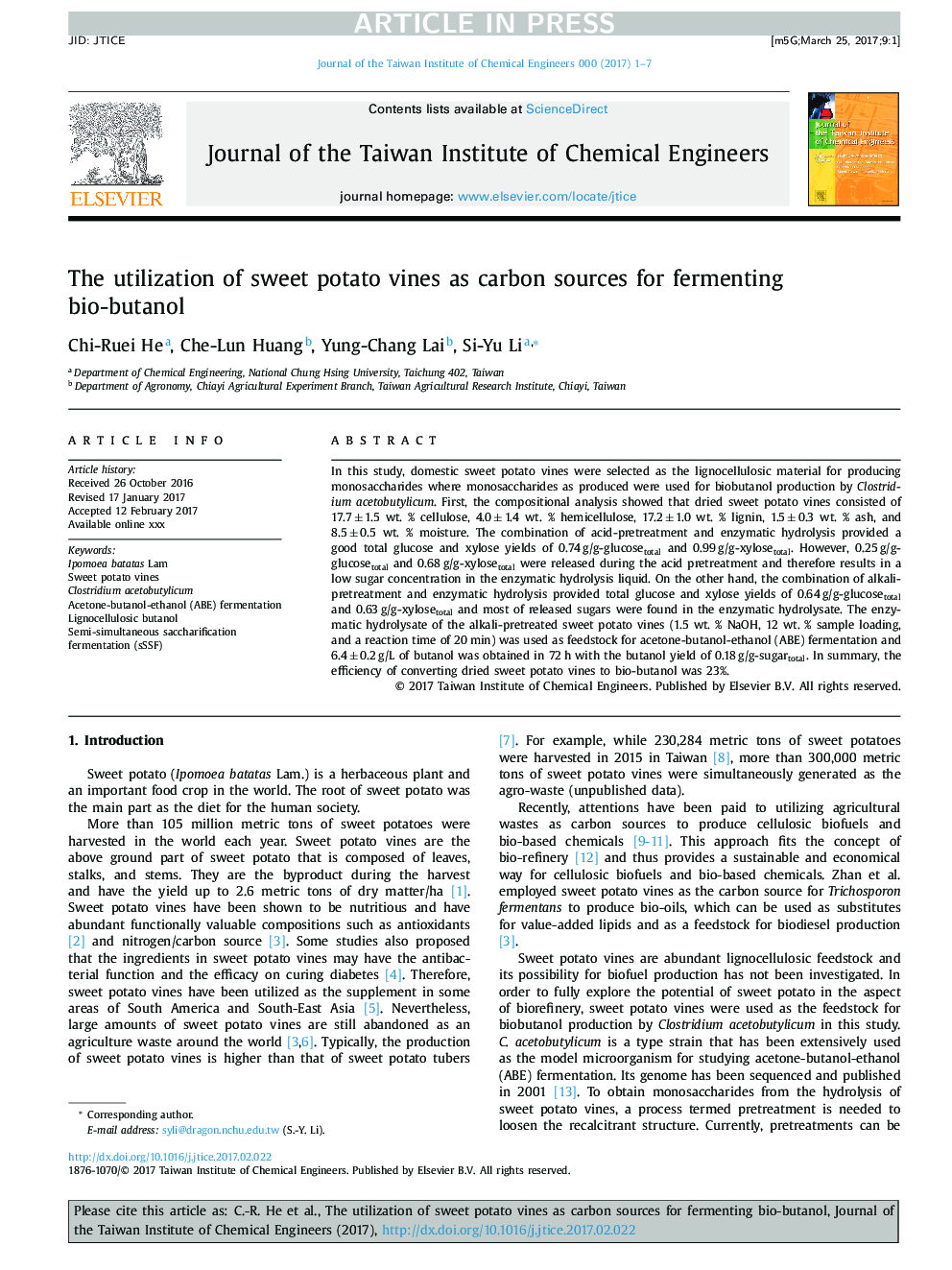| Article ID | Journal | Published Year | Pages | File Type |
|---|---|---|---|---|
| 4998530 | Journal of the Taiwan Institute of Chemical Engineers | 2017 | 7 Pages |
Abstract
In this study, domestic sweet potato vines were selected as the lignocellulosic material for producing monosaccharides where monosaccharides as produced were used for biobutanol production by Clostridium acetobutylicum. First, the compositional analysis showed that dried sweet potato vines consisted of 17.7â±â1.5 wt. % cellulose, 4.0â±â1.4 wt. % hemicellulose, 17.2â±â1.0 wt. % lignin, 1.5â±â0.3 wt. % ash, and 8.5â±â0.5 wt. % moisture. The combination of acid-pretreatment and enzymatic hydrolysis provided a good total glucose and xylose yields of 0.74 g/g-glucosetotal and 0.99 g/g-xylosetotal. However, 0.25 g/g-glucosetotal and 0.68 g/g-xylosetotal were released during the acid pretreatment and therefore results in a low sugar concentration in the enzymatic hydrolysis liquid. On the other hand, the combination of alkali-pretreatment and enzymatic hydrolysis provided total glucose and xylose yields of 0.64 g/g-glucosetotal and 0.63 g/g-xylosetotal and most of released sugars were found in the enzymatic hydrolysate. The enzymatic hydrolysate of the alkali-pretreated sweet potato vines (1.5 wt. % NaOH, 12 wt. % sample loading, and a reaction time of 20 min) was used as feedstock for acetone-butanol-ethanol (ABE) fermentation and 6.4â±â0.2 g/L of butanol was obtained in 72 h with the butanol yield of 0.18 g/g-sugartotal. In summary, the efficiency of converting dried sweet potato vines to bio-butanol was 23%.
Related Topics
Physical Sciences and Engineering
Chemical Engineering
Process Chemistry and Technology
Authors
Chi-Ruei He, Che-Lun Huang, Yung-Chang Lai, Si-Yu Li,
